|
|
|
|
|
|
|
"Nonkilling art explores the spirit and practice of how to prevent, respond to, and to improve individual, social, and global well-being beyond killing." —Glenn D. Paige
|
|
|
|
Nonkilling Arts Research Committee Letter: Vol. 6, N. 1 (January-February 2022)
|
|
|
Dear NKARC colleagues and friends,
Happy New Year! NKARC Letter enters its 10th year. Grateful thanks for your readership as well as for your eclectic and inspirational contributions awakening our passion and intellect to prevent violence and connect with life. This issue comprises Nonkilling poetry, fiction, drama, music, activism, philosophy, archeology, commemoration architecture, and journalism.
|
|
|
|
1. Nonkilling Poetry
Two poems
by Francisco Gomes de Matos, Recife, Brazil
|
A peaceful world?
A world of agreements
A world of mutual respect
A world of dignity-communication
A world of spirituality
A world of wise mediation
A world of serenity
A world of environmental sustainability
A world of peace education/ psychology/linguistics
|
Life-affirming
Life-supporting
Life-sustaining
Life-prioritizing
Glenn-Paigean Approach-globalizing
Nonkillingly dignifying
Nonkillingly. Peacebuilding
Nonkillingly nonviolence humanizing
A Life protecting grammar
A Life blessing Spirituality
|
Of Peace
by Mriliani Pandey, Bhopal, India
What the world needs is peace
Now is the time for all the conflicts to cease
Peace, that has made way for the greatest of innovations
Which has always contributed in the development of all the nations
Peace agreements that have always ended wars
and gives you the heart to share what’s yours
Peace renders the power to make friends with the foes
and love that gives warmth even when outside it snows
Peace has always enabled love to win
and made way for new friendships to begin
|
|
|
|
2. Nonkilling Fiction
The Artist and The Assassin by Mark Frutkin (published by The Porcupine’s Quill, 2021)
The new novel The Artist and The Assassin by Mark Frutkin set in Italy of 1600 is about the renowned renaissance painter Caravaggio and his pursuit by a would be assassin Luca Passarelli, who at one time was a model for his paintings. Caravaggio is passionate about his art, daring to use bold brush strokes and innovative colours to depict light and dark moods of his subject. Meanwhile Passerili struggles to live from robberies and killings. A tense juxtaposition of the two paths to survive and deal with inner passions bring about vastly different consequences. The novel’s unique structure alternates between the artist and the assassin and their innermost emotions and urges that propel their actions before they occur. Ultimately, the novel shows the transformative power of art. Even the harshest among us have a possibility for change.
A tour de force, a wondrous journey through the arts, religion, culture and characters that inhabited those tumultuous times. Excerpt from the novel:
|
|
|
“THE ASSASSIN
He has me posing as a saint, me, Luca Passarelli, with a thief for a father and my mother a wet-nurse. To be precise, he wants me playing Saint Matthew. Matthew, the one called by Christ from the streets to his spiritual life as an apostle. I sit at a table in the vaulted cellar of a palazzo belonging to one Cardinal Del Monte. I’m waiting with the artist’s other models, several older louts and two young men, boys really, snappily dressed in silks, wealthy punks out slumming with the likes of us. The artist chooses to pose me as the apostle and saint. If you can imagine that. Me a saint. I would qualify for a saint’s vow of poverty, certainly, but not by choice. Me with my one set of worn, flea-ridden clothing—a shirt, a tunic, and a pair of hose with holes in the knees. I cannot afford anything else. He has made me up to look older than I am. And I am no Jew, though Matthew was.
.......
Standing on the bridge now, staring at Enzo’s head, the Tiber flowing beneath me, I wonder how it is that this arrogant pig of an artist makes me see the world through his eyes. I am angry. Angry for being dismissed by Merisi. Angry because I can barely find a way to fill my belly. Angry because the world is thick with misery and pain. I look again at the severed head of my so-called friend, stare into his eyes, and realize that at the heart of anger is profound sadness.
But I am no philosopher so the thought doesn’t stick."
|
|
|
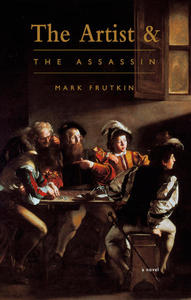
|
|
|
3. Nonkilling Visual Arts
|
NKARC colleague artist Alberto Agraso from Cadiz, Spain now living in Canada is a writer, illustrator and graphic designer co-founder of the Walking for Peace Publishing, he describes himself as an “artist of the Spirit”. The positive tone of the black and white graphic sketches below herald a viewer into the New Year, reflecting optimism of human spirit to tackle new and old challenges.
|
|
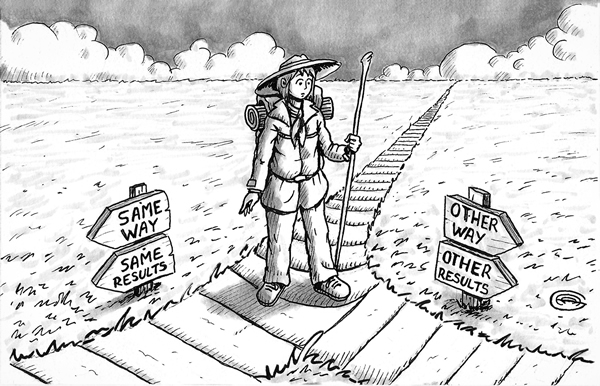
|
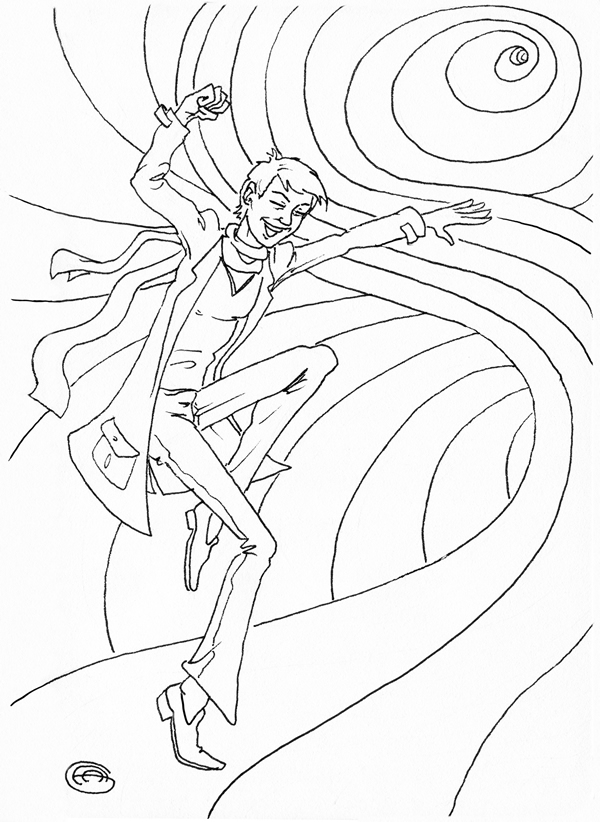
|
|
|
|
|
4. Nonkilling Museums/Memorials
The Partition Museum, Amritsar, India - There are countless war museums all over - World War, Holocaust, Hiroshima, etc. etc., but no Museum for a tragedy where in the creation of two independent countries through the Partition in 1947, one million people of the Indian sub-continent died and 10 million were displaced. The Partition Museum was opened on 24 October, 2016 in Punjab, India.
|
|
An important people initiative that should have taken place a long time ago. A group of citizens with vision had courage to realise the project through a memorial Trust to commence the project. The brick building architecture for the memorial located in the old townhall has been restored and curetted with refugees artifacts, photographs and paintings recreating the impact of the tragedy and the way forward. This is a more sane approach to commemoration than hyper-patriotic flag-lowering ceremony that is enacted every evening by the armies of India and Pakistan on both sides of the Wagah border.
|
|
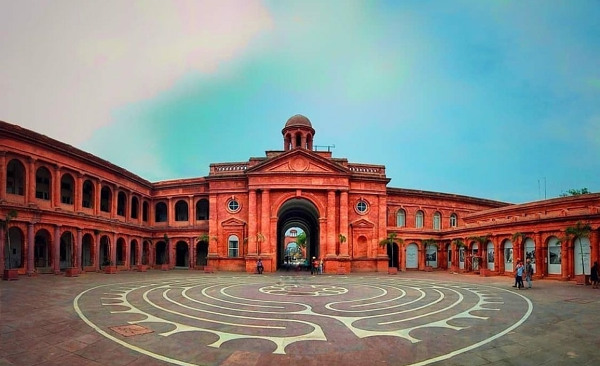
|
|
|
5. Nonkilling Archeology and Cave Paintings
Incredible Cave Paintings 8 Miles-Long Revealed Deep in Amazon Forest: The Sistine Chapel of Ancients
“Tens of thousands of pristine cave paintings were found daubed across an eight-mile stretch of rock in a once-in-a-century discovery in Colombia’s Amazon rainforest.
Hailed as the “Sistine Chapel of the Ancients,” it’s the kind of discovery that changes the world of archaeology.
Believed to be 12,500 years old, the art is extremely detailed, and includes handprints and depictions of Ice Age megafauna like the mastodon, a relative of the mammoth, Ice Age horses, and giant ground sloths...”.
|
Read complete story from the Good News Network - TRANSCEND Media Service.
|
|
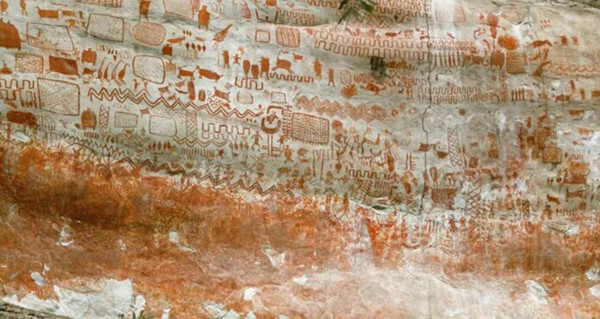
|
|
|
6. Nonkilling Music
(i) Music in Peacebuilding by Olivier Urbain
About two new East Asia music research organizations, Min-On and MOMRI, the NKARC colleague Dr. Olivier Urbain recently spoke:
|
|
|
“In 2014 Japan based Min-On established their own research institute, called the Min-On Music Research Institute (MOMRI), of which I am currently the director.
I will briefly talk about how our activities and research, and how I believe they contribute, in some small way, to the emergence of a nonkilling world.
Since 2014, we have organized many conferences and published several articles in academic journals, to contribute to the development of a philosophy and methodology of Music in Peacebuilding. We could say that the potential of music is all about relationships. We are currently working together with the National Museum of Ethnology (Minpaku) in Osaka, on the theme of music and conviviality.
Going back to our theme, “Recovering better for an equitable and sustainable world,” I think that one of the most important lessons of this pandemic is the crucial importance of relationships. We need to develop the creativity, skills and generosity to care about each other and learn how to embrace differences and live in active coexistence, in other words, with conviviality. We recently heard two outstanding research reports about how music was used to help change many lives in very poor neighborhoods in Thailand, and in Malaysia. Our institute has produced a series of six videos that feature documentaries showing how music can facilitate recovery from school bullying, from natural disasters, from sickness, and also facilitate reconciliation between parties in conflict, and much more.
It is all about relationships. It’s about how people, inspired by music in many ways, are able to enhance and improve their relationships to experience more conviviality.
About music and the nonkilling movement: A bit of theory, I would like to give you a summary of the current understanding of the application of music in peacebuilding activities.I offer these so you may enjoya headstart in your explorations of music in peacebuilding.
The aim is to share five crucial ways of thinking about the most effective ways to apply music in peacebuilding activities. It is based on the presentation I gave for the online summit on Music, Business and Peace on May 12, 2017, on work done since then, and on elements of an exhibition on Music and Human Rights held by our institute (MOMRI) in Tokyo during the first half of 2018.
I present five basic ideas for exploring music in peacebuilding: 1. Ambivalence: music can be used for destructive purposes such as killing and torturing, as well as for constructive aims such as healing and reconciliation. 2. Musicking: music can be considered as action, what we do to ourselves and each other through musical activities. 3. Booster: it may be safer to consider that music can act as a booster to a range of activities, rather than believing that music has some intrinsic power by itself. 4. Non-Universality: people’s concrete experience of musicking practices can be very different from each other, and even totally incompatible. 5. Repetition: it is only by repeating positive musicking experiences that participants will be able to change their behavior, for instance a shift towards a more collaborative mindset. The complex issues emerging when trying to link music and peace can also affect research and activities linking business and peace."
|
|
|
|
|
7. CGNK Drama/Play
Copenhagen by Michael Frayn.
English playwright Michael Frayn's 1998 play is about one of the greatest moral dilemmas of the 20th century. Set during the World War II, it is a dramatic re-imagining of the mysterious wartime meeting in 1941 between two scientists from the opposite sides-- German physicist Werner Heisenberg and Danish physicist, Niels Bohr. Their meeting is to discuss the likelihood of Atomic bomb resulting from their work and its impact. A profound conversation takes place on how the history would be changed and judge them. The play presents several versions of Heisenberg and Bohr’s exchange, arguing about the ramifications of each potential version of their meeting and the motives behind it. “They discuss the idea of nuclear power and its control, the rationale behind building or not building an atomic bomb, the uncertainty of the past and the inevitability of the future as embodiments of themselves acting as particles drifting through the atom that is Copenhagen” (Wikipedia).
|
|
|
|
8. Nonkilling Activism
- ICAN - New York City joins the ICAN cities appeal to ban nuclear weapons
[the appeal by global youth is to divest from nuclear weapons, establish a committee responsible for programming and policy related to NYC’s status as a nuclear-weapons-free zone, and call on the US government to join the Treaty on the Prohibition of Nuclear Weapons (TPNW)].
- Shifting The Bad News Narrative For Social Good.
Global SunRisers eGen Z filmmaker and Social Entrepreneur Kasha Sequoia Slavner talks about activism. She believes “if we’re tired of being inundated with bad news, we need to change our actions so the narrative can shift too.”
|
|
|
9. Nonkilling Reflections
Philosophy of Person-centered Accountability in Political Thought By Clay Edwards
NKARC colleague Clay Edwards writes with a philosophical slant on matters of art, politics and ethics. He states: “To change one’s self is to alter, give up, a part of personal existence. Therefore ‘to change’ is generally perceived as a loss of a part of self. For others to attempt to change the self of an individual is to immediately set resistance into action, in service to person-preservation. This is no less true of every polity the mind of humanity can devise to separate or wall off to others across the world community, domestic or international.
|
Therefore, if people have the opportunity to remain as is and still be esteemed by others, they are in a position to change what they do in enhancing directions. This is the stake of politics itself – enhancing directions, because there is little or nothing to lose in changing what we do. That is, what Plato had Socrates explain in the dialogue Gorgias, the purpose of rhetoric in public affairs is to make others better.”
|
|
|
|
10. CGNK Updates
Nonkilling Education and Training
Certificate Course in Peace, Nonkilling in the World Religions by by Joam Evans Pim
Jagran Lakecity University Bhopal in collaboration with the Global Green University international network of educators is offering a Certificate Course in Peace, Nonkilling in the World Religions that will start on January 14, 2022, with a 5 week duration. The course covers teachings and practices of the world’s main religions in relation to theories of peace, war, and nonkilling. Which of them advocate nonviolence? Which of them have specific teachings on conflict resolution and war prevention in their holy scriptures? How does history judge their behaviour over the centuries? How many deaths have their followers been responsible for in mathematical estimates and how can the paradigm of nonkilling replace the idea that “God wants killing”. The course given by Drs. Katyayani Singh and Thomas C. Daffern will combine cutting edge religious studies as well as political science; the course should be of direct general interest to all students of current affairs, law, political science, philosophy, community relations at the university as well as more widely afield.
|
|
|
|
11. Nonkilling Journalism
|
|
|
Last Word
A Thanksgiving Blessing
Peaceloving Nature
White clouds carry Peace
Ocean waters never cease
Amazonian forest hosts millions of trees
A universe of animals on the
ground and air
Nature gives life everywhere
-- Francisco Gomes de Matos, Nonkilling Peace Linguist, Recife, Brazil
|
|
|
|
|
As always, I look forward to your inspiration, suggestions and comments.
|
Deep gratitude to all who contributed and pointed to the material for this Letter.
Stay Safe, Stay Well.
|
|
"Nonkilling Culture crosses all the lines." —Glenn D. Paige
|
Nonkilling is THE measure of Human progress
|
[THIS IS AN INTERNAL NEWSLETTER OF THE NKARC. COPYRIGHT FOR ALL MATERIAL IN THE NEWSLETTER REMAINS PROPERTY OF THE SOURCES/WRITERS/ART CREATORS]
|
|
Stay in contact also on Social Networks
- Please feel free to contact NKARC Letter's coordinator at billbhaneja@nonkilling.org.
- You can also follow the Center for Global Nonkilling at these social networks:
|
 
|
|
|
|
|
|
|
|